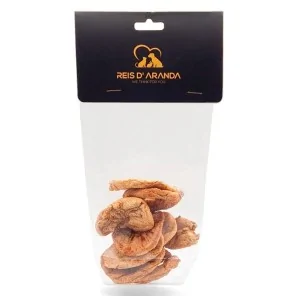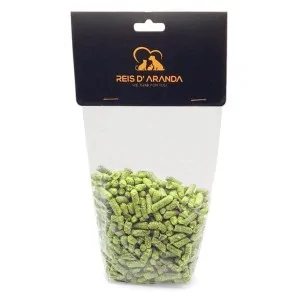The Tornjak originated from genetically homogeneous, almost extinct, indigenous shepherd dogs. These dogs have...
THE BUTTERFLY DWARF RABBIT
INTRODUCTION
Butterfly dwarf rabbits have unique fur markings, which makes them popular in rabbit shows. In addition to their appearance, they are also playful, so children cannot resist their charm.
THE ORIGIN OF THE DWARF BUTTERFLY RABBIT
Randy Shumaker discovered the Dwarf Papillons during a European show. These rabbits originate from Germany and are often called Zwergschecken by the locals. In English, it means ‘dwarf dwarf’. The Papillons presented during the show came from European countries, including Germany, Sweden, France, Austria, Italy and Switzerland.
Although the competition was stiff, Randy and Allen managed to buy six dwarf Papillon rabbits. They returned to France to buy the rabbits from French and Swiss breeders. With the help of their friend, they were able to bring the rabbits to the United States.
Randy and his friends applied for a Certificate of Development (COD) in January 2016. The team used the Zwergschecken standard to apply for a foreign breed COD. They named the breed ‘Dwarf Papillon’. In 2020, ARBA recognised the Chocolate Dwarf Papillon as the 50th recognised breed.
WHAT IS THE BUTTERFLY DWARF RABBIT LIKE?
1. TYPE, SHAPE AND CONSTRUCTION OF BODY: The body is relatively robust, equally wide at the front and back. The back is relatively short and the croup is well rounded. The legs are short according to the dwarf type. The tail is in proportion to the body and well attached to it. Neither males nor females have dewlap. The head is short and strong and set close to the body. It is also voluminous in bitches. The muzzle and forehead are relatively broad (the width of the male's forehead at eye level is about 5.5 cm and in females 5.0 cm). The ears correspond to the size of the body. They are carried close together, slightly open in a V-shape at the top. The ideal length of the ears is approximately 6.5 cm. The minimum length is 5.5 cm and the maximum length is 8.0 cm.
- Slight faults: See general information. Slightly short ears of less than 6.0 cm or slightly long ears of more than 7.0 cm. Depending on the deviation up to 1 point will be deducted.
- SERIOUS FAULTS: see general information. Ear length of less than 5.5 cm or more than 8.0 cm.
2. WEIGHT:
- NORMAL WEIGHT: 1.40 - 1.80 kg.
- MINIMUM WEIGHT: 1.20 kg.
- MAXIMUM WEIGHT: 1.90 kg.
COAT: The coat is relatively short according to the size of the dwarf butterfly. It is dense, has a fine structure and is characterised by a fine, even appearance without protruding edges. The ears are well furred.
4.HEAD DRAWING: The head drawing consists of the butterfly, the circles under the eyes, the cheeks and the ear drawing. The butterfly is well defined. This includes a beautifully rounded spine and full wings surrounding the lower jaw on both sides. The dark circles are closed and evenly broad. The cheek points are round or oval and lie as loosely as possible below the dark circles of the eyes. Ear markings are clearly defined at the base of the ears.
- MILD FAULTS: Serrated butterfly: unsightly spine. One-sided absence of the edge of the lower jaw. Rough, uneven dark circles under the eyes. Base of the ears dirty. Small black spots on the head (splashes).
- SERIOUS FAULTS: incomplete butterfly; missing spine; large beaks on the wings of the butterfly, total absence of the lateral edge of the lower jaw. Closed frame on lower jaw. Cheek point attached. Absence of one or both cheek points; double cheek point on one or both sides. Attached cheek point. Eye-ring not closed; connection of one or both eye-circles with the butterfly or ear pattern.
5.BODY DRAWING: The body pattern is formed by the eel line and the lateral pattern. The eel line is uniformly wide (1.5 to 2 cm) from the neck to the tip of the tail. The lateral markings are made up of individual, preferably independent, not too large dots, about 2 to 3 cm in diameter. They should be evenly distributed on both sides of the flanks and legs. Between 5 and 7 dots are desired on each side. Spots on the chest, belly, or underside of the tail are not considered. The smaller body surface area compared to small butterflies should be taken into account when assessing the pattern.
- Slight faults: jagged or uneven, broad or narrow eel line, interruption of the line from the nape of the neck to the end of the shoulder blades or from the base of the tail to the tip of the erect tail. Lateral pattern slightly close to the eel line, flank pattern weak, too full or uneven. Ease of stretching chains (more than one independent chain point on the body on one side of the body or both sides). Neck points less than 2 cm from the eel line are not considered as chain points.
- SERIOUS FAULTS: Clearly visible interruption of the eel line between the shoulder blades and the tip of the tail raised. Strong connections between the trunk pattern and the spine line. More than 2 independent chain stitches on one side. Less than 3 lateral points on one side. Lack of a pattern feature.
COLOUR: The recognised colours are black, blue, havana and tricolour. The ground colour is pure white, with good brilliance; the ground colour here is also white, which does not differ from the ground colour. The pattern colours black, havana blue or black-yellow must be pure and not intermingled with hairs of other colours. Small white patches on the neck and on the eel line from the neck to the end of the shoulder blades as well as in the area from the tail to the tip of the erect tail are disregarded. The eyes of the black-white and tricolour animals are brown, those of the blue-white animals are bluish-grey and those of the Havana-white animals are brown with a slight red gleam. The claws are unpigmented (white).
- MILD FAULTS: Yellowish tinge to the ground colour. Dirty markings and edges of ears slightly interspersed with white hairs, flesh-coloured cleft lips. Small white patches on the sides drawing dots and/or in the circles of the eye ring area.
- SERIOUS FAULTSS: Very impure pattern colour and heavily interspersed with white hairs. Two pattern colours except in tricolours. White tip of nose or lip. White patches in the butterfly, in the eye ring (except in the area of the ring tip) in the ear colour or in the eel line (except in the area of the shoulder blades and the erect tail) presence of only one colour of pattern in a pattern feature except in the cheek points in tricolours. Eye colour other than required. Coloured claws.
ARE ALL WHITE DWARF RABBITS WITH BLACK SPOTS DWARF BUTTERFLIES?
No, not all dwarf or medium-sized rabbits with a pattern of spots on a white background are butterflies or belong to the Mariposa (Giant or Dwarf) breed. As with many other colour patterns, the butterfly, broken, charlie or mantle patterns are widespread and some of them go hand in hand with the vienna gene (the cause of blue-eyed white rabbits), which emulates this same colour pattern but imperfectly. For a rabbit to be a Mariposa it has to be of the same breed or possess the characteristic colour pattern (butterfly on the nose, painted ears, well defined eyes, vertebral stripe, lateral map composed of 6-8 moles...).
THE CHARACTER OF THE DWARF BUTTERFLY RABBIT
The Dwarf Butterfly rabbit is active and playful, it tends to be a docile and pleasant breed ideal for beginners and is relatively easy to socialise with other rabbits.
CONCLUSION
The Dwarf Butterfly Rabbit is one of the most beautiful rabbits in existence. Its spotted body and its sweet and friendly character make it an animal that you will immediately become very fond of. Moreover, it is not very difficult to look after, as in fact it only needs the same as its kind: to be cared for as it deserves.
Leave a comment
Log in to post comments















